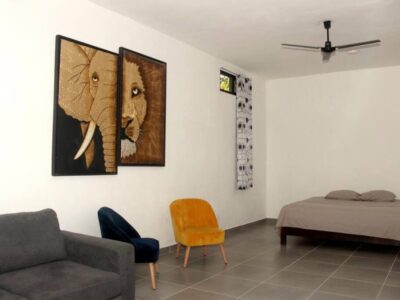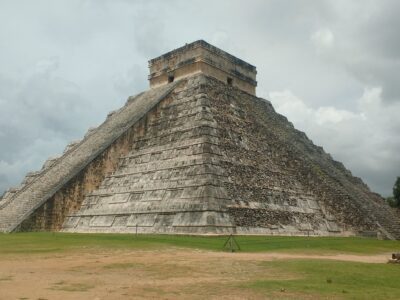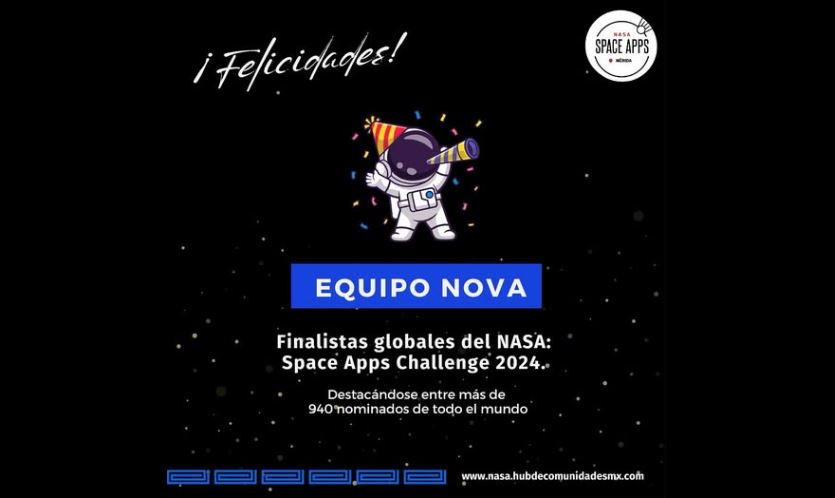Congratulations, Team Nova from Merida, Yucatan!
At The Yucatan Times, we are proud to announce that Team Nova has been selected as a global finalist for the Space Apps Challenge 2024, among more than 9,900 projects that participated and 940 nominees from around the world.
This achievement demonstrates their talent, effort, and passion for solving challenges that impact both Earth and space.
We will be watching the announcement of the global winners on January 16, 2025!
In the meantime, we will celebrate this great step together.

Imagine a scenario where multiple space stations orbit various celestial bodies within the solar system. Astronauts must live, work, and play for long durations in microgravity environments. Not only does living under these conditions impact their physical well-being, but sometimes they get bored! Your task is to design a game that leverages the unique challenges and opportunities of a microgravity environment to entertain and contribute to the overall well-being and cohesion of astronaut crews, enhancing their resilience and adaptability in the extraterrestrial frontier.

Pok-TaBall
High-Level Summary
Our Nova Team developed the game “Pok TaBall” which consists of the use of a new device called “Kinich Ball” in which the objective of the game is to be able to take this device from point A to point B. This is to keep the astronauts physically and psychologically active, having to play as a team and designing strategies while using their muscular strength to move.
Project Demo
Project Details
Developing a game in a microgravity environment is not easy, especially knowing how the movements of a body behave in an environment like this, which is why I proposed a game around an electromechanical device.
The game that was developed was named “Pok-TaBall” in reference to the ball game of the ancient Mayans who were an inspiration for its development.
The main objective of the Pok-TaBall is to be able to take the device known as the “Kinich Ball” from point “A” to point “B”.
Pok TaBall is a game that stimulates physical exercise, body coordination, and stress relief. The goal is for players to master the control of the ball using their entire body. However, players cannot anticipate the direction or final destination of the ball due to the internal system of the Kinich ball.
This ball is programmed using Arduino Uno software, and it is 3D printed with filament, equipped with geared motors, an Arduino Nano board, and Dupont cables. The movement of the motors is the most essential part of the game, as it has five different combinations of random movements, creating a dynamic and unpredictable experience. Each throw becomes a challenge, similar to rolling a die and not knowing the outcome.
Rules:
It will be considered a foul if a player uses dishonest tactics, such as grabbing or physically blocking an opponent.
– A time limit of 50 minutes can be set for each round, after which the team that has successfully introduced the Kinich Ball into the opposing space will be evaluated.
– Teams can interact with each other to deflect or intercept the Kinich Ball, but they must follow fair play rules.
The implementation of these measures is of utmost importance for the health of the astronauts and to keep their body and mind active, to avoid physical wear such as decalcification, muscle atrophy, loss of hand-eye control, and cardiovascular problems.
Kinich Ball is a device that helps astronauts have a more immersive game when developing games and experiences in microgravity.
Its operation is based on the theory of angular momentum to generate an erratic movement, this is due to the use of fans that give it movement.

Its operation is by implementing a microcontroller that activates 2 motors sequentially in random order with a sequence of movements so that their movement can be difficult to predict.

In the previous image, you can see the electronic design that was used to keep the device simple and compact and try to minimize the final weight of the prototype.
The programming of this device was Arduino IDE which made it easier for us to use these versatile microcontrollers.
We hope to achieve this project to be replicated by NASA or seek to develop devices that not only help in space stations, but also in the different areas that will be inhabited in the future, such as the moon, Mars, or another celestial body.
Likewise, we can be part of these developments to continuously improve our skills, as well as contribute to the basic needs of humanity in other celestial bodies.
Use of Artificial Intelligence
- Gemini AI: https://gemini.google.com/app?utm_source=google&utm_medium=cpc&utm_campaign=2024esMX_gemfeb&gad_source=1&gclid=Cj0KCQjw6oi4BhD1ARIsAL6pox1Bmh-P-eByHvguSRrY_p517eeMRIeYUzBc4PJLGwLjJDuqh44uzyQaAnB9EALw_wcB&gclsrc=aw.ds
- Chat GPT: https://chatgpt.com/
Both sources were used to support the writing process, primarily to organize or explain an idea more clearly, correct texts, translate languages, and generate ideas, as they help optimize the team’s resources.
Space Agency Data
- Effects of space on the body
- What Is Microgravity?
- 7 Sports Astronauts Love Without Gravity
- The Human Body in Space
- ¿Qué le pasa al cuerpo humano en el espacio?
- La NASA celebra el tercer aniversario de los robots Astrobee en la Estación Espacial
References
Team Information
Local Event: Mérida, Mexico
Challenge: “Galactic Games: Fun in a Microgravity Environment”!
Team Members

Team Owner
Angel Augusto Pardenilla Uc
Mexico
Sergio Isaac Pacheco Díaz
Mexico

Sandra Vicente
Mexico

Diego Armando Rios Hesiquio
Mexico

Sergio Joel Poot Dzib
Mexico

Ángel Gabriel Martinez Hernandez
NASA Space Apps is funded by NASA’s Earth Science Division through a contract with Booz Allen Hamilton, Mindgrub, and SecondMuse.
TYT Newsroom
The post Yucatecan interdisciplinary team is a global finalist in NASA’s Space Apps Challenge 2024 first appeared on The Yucatan Times.














